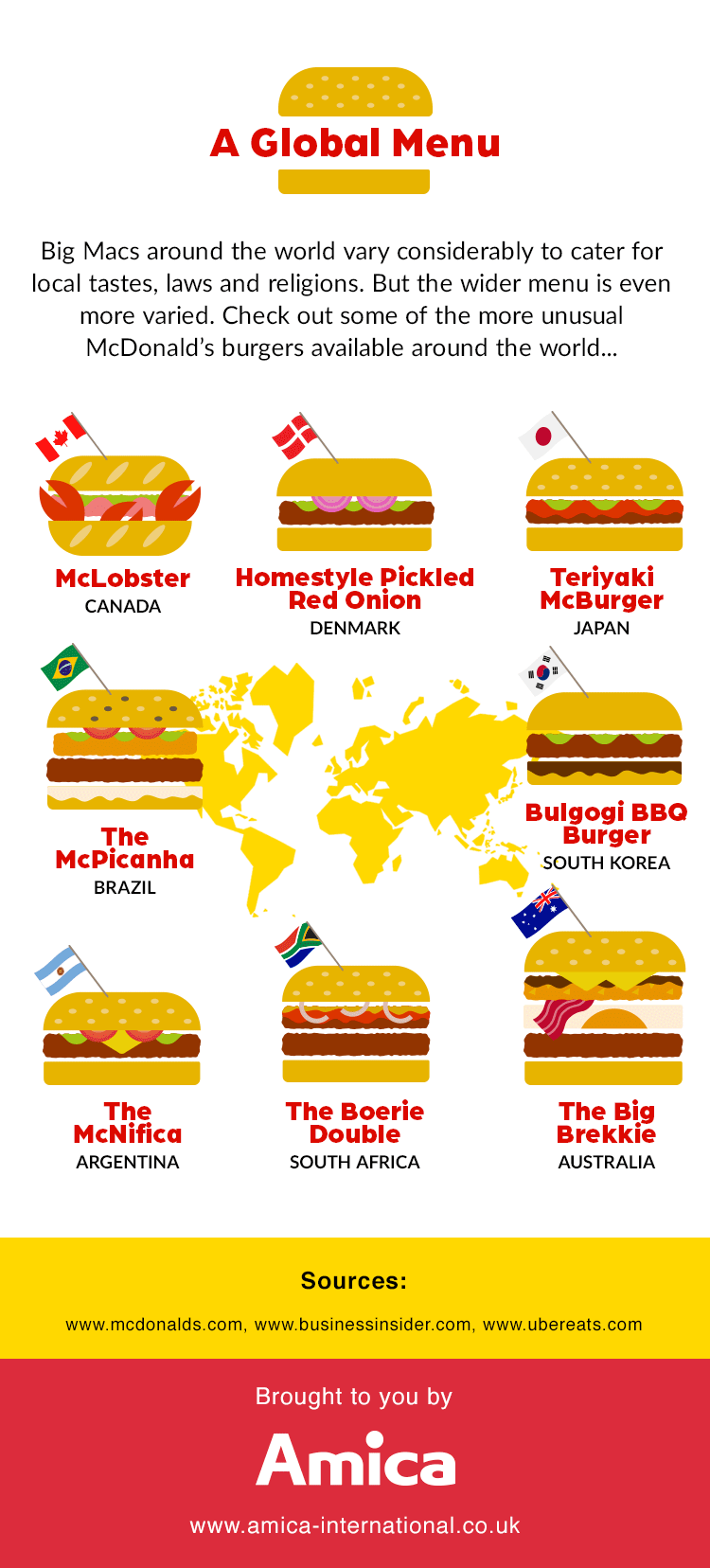Eating fast food abroad
There’s a bit of social stigma around going to eat at a fast-food restaurant when you’re on holiday, let’s be honest. If you were jetting off on your summer holidays and told people you’d mostly eaten at McDonald’s people would have a few questions. The first one would probably be “why?”
After all, going abroad is meant to be about exploring new cultures, and a big part of that is experiencing it through local cuisine. So, this is where people are often quite surprised at just how different the same meal can be depending on where you travel. Take, for example, the humble Big Mac. It’s a simple, fuss-free burger with two beef patties, sauce, cheese, lettuce, pickles and onions on a sesame seed bun. Right? Well… Actually, that entirely depends on where you are.
How much can the menu change?
The Big Mac was originally launched in 1967 by a McDonald’s franchisee in Pennsylvania, USA and within a year it was sold across the states. As the Big Mac grew in popularity, so did Mcdonald’s and it’s now sold in over 100 countries. Part of why McDonald’s has been able to expand globally is that it localises its menu to every country it sets up in.
In Israel, because of kosher laws, the Big Mac doesn’t have any cheese. This actually makes it the healthiest Big Mac out of the 20 countries we looked at but… Then again… When it comes to fast food, healthy is quite a relative term.
Egypt has the least healthy Big Mac when you compare sheer calories and fat content, but it is 10% bigger than its American counterpart. This was particularly surprising in our research as American has a reputation for its extremely large portions compared to many other places.
Why is changing the menu important?
Well, if you look at another American giant like Starbucks, they’ve stumbled a few times when it comes to expansion. When they attempted to expand into Australia in 2000, they quickly failed, despite Australia having a strong coffee culture. This happened partially because of Australia’s strong coffee culture, consumers felt that Starbucks didn’t try to adapt to Australian culture by offering local coffee and changing the menu to suit them. In 8 years, 2/3rds of their Australian shops had closed.
What about pricing?
It isn’t just the ingredients of the Big Mac that change across the globe either. The cost of a Big Mac is also regional, if you hop across the border to Canada you can expect to pay an extra $0.51 for your Big Mac. South of the border in Mexico, it’s $1.18 cheaper, although it’s might be a bit out of your way to go just to save a dollar.
The most expensive Big Mac? Sweden. Which is $5.40 compared to America’s average of $3.99.
The extended menu
It isn’t just the Big Mac that changes depending on where you go! Many countries have specialised wider menus that make use of regional tastes and flavours. Japan has the Teriyaki McBurger which uses Teriyaki as a delicious sauce. Denmark’s own regional offering is the Homestyle Pickled Red Onion which uses Danish pickling recipes to create a tangy topping.
Now you know just how much your chain eateries can differ when you travel, you don’t need to feel any guilt next time you’re jet-lagged and just need some salty fries and a sesame seed bun.
This infographic by Amica international gives a full break down of how Big Macs differ in 20 countries across the globe so have a look through it and let us know – which is your favourite? And what offering do you wish they’d bring to your local McDonald’s?





